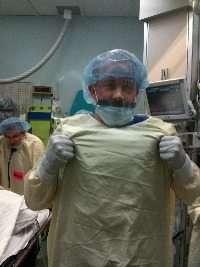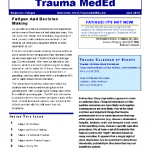Time to finish up this series on trauma mortality! We discussed the two types of anticipated mortality last week, now it’s time for the final (and worst) one.
Old nomenclature: preventable death
New nomenclature: unanticipated mortality
Note the subtle difference. The old name presumes you could have done something about it, which can lead to legal issues in some cases. The new one implies that death was unexpected, but does not presume that it could have been prevented. A good example would be a trauma patient who suddenly dies from a massive PE, despite DVT prophylaxis done according to the book.
Any unanticipated mortality should launch a full investigation from the trauma performance improvement program. In some cases, hospital PI may get involved. A root cause analysis may be indicated, depending on how many factors are involved. These cases must be discussed by the multidisciplinary trauma PI committee. It’s essential that everyone involved do their homework and become familiar with every aspect of care so that a meaningful analysis can occur at the meeting.
Trauma center reviewers will expect to see detailed documentation of the analysis in the PI committee minutes. And unless the death was a complete and nonpreventable surprise there should be new protocols, policies and practice changes apparent. If these are not present, expect major reverification issues for your trauma center.
Is there an appropriate ratio of the three types of mortality? Obviously, there is a fair amount of variability. But after years of doing reviews, I can offer some guidelines. Here’s my 100:10:1 rule of thumb:
- 100 cases – Anticipated mortality without opportunity for improvement (AMW/OOI)
- 10 cases – Anticipated mortality with opportunity for improvement (AMWOI)
- 0-1 case – Unanticipated mortality (UM)
If your hospital’s numbers are outliers in any group, your clinical care and performance improvement program will get extra scrutiny. If all your cases are AMW/OOI, then your PI process is too lax. This is a complex business, and there a many ways to improve our care. If your AMWOI cases are more frequent, your threshold for improvement may be set too low (see my post on this last week). If you have more than 1 or 2 UM, then there may be some serious care quality issues.
Bottom line: When reviewing trauma mortality, be realistic but brutally honest. We learn from the mistakes we make. But by adhering to the process, you should never make the same mistake twice.
Related posts:


